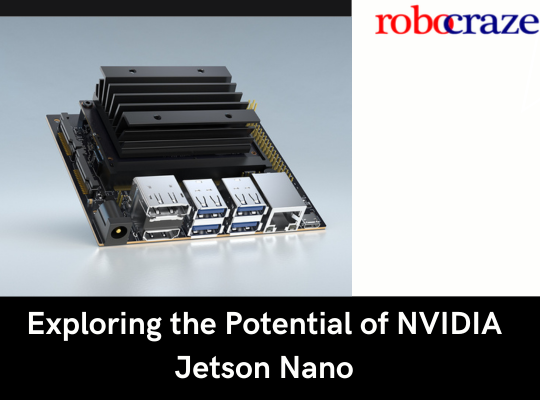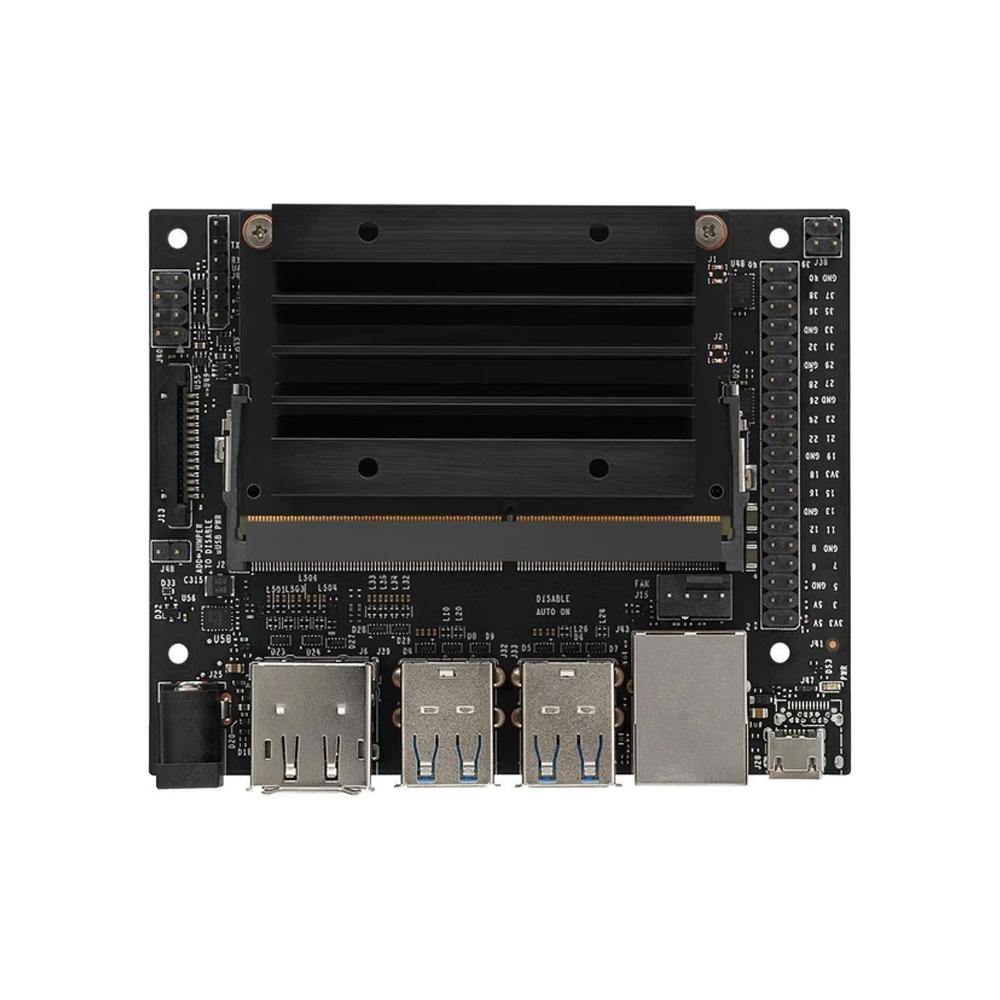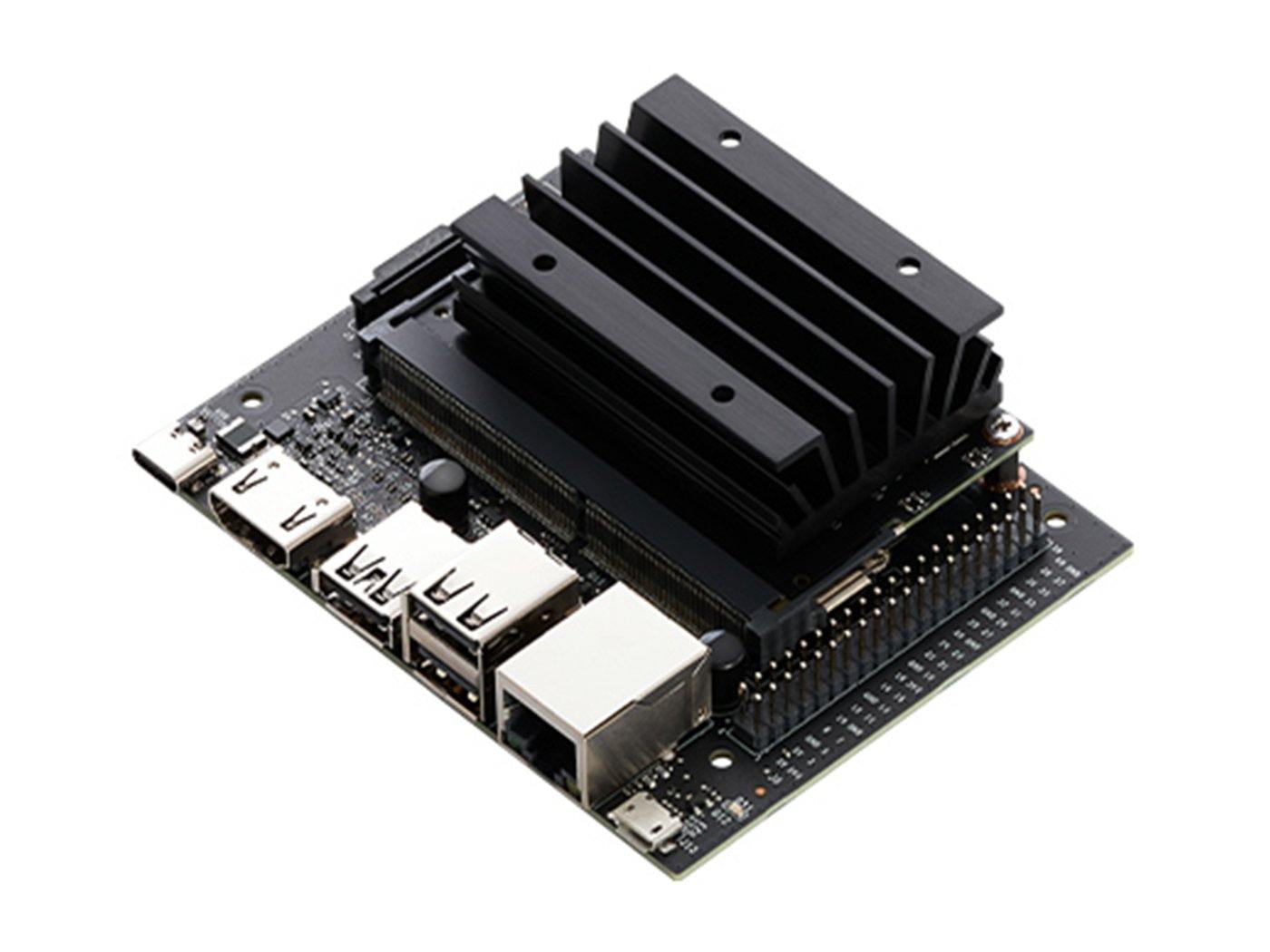Within the quickly changing field of artificial intelligence (AI), there is an unprecedented need for intelligent, effective, and small-sized computer systems.
The NVIDIA Jetson Nano is one such ground-breaking invention that has been causing a stir in the AI world. By fusing the power of NVIDIA's state-of-the-art GPU technology with a small form factor, the Jetson Nano gives edge devices access to AI capabilities never seen before.
We go deeply into the capabilities, uses, and promise of the NVIDIA Jetson Nano in this extensive investigation.
Understanding the NVIDIA Jetson Nano
Fundamentally, the NVIDIA Jetson Nano is a compact and powerful single-board computer intended for edge artificial intelligence applications.
With 128 NVIDIA CUDA® cores and an NVIDIA MaxwellTM architecture GPU, it is a powerful GPU that provides remarkable performance for AI inference applications.
It also has 4GB of LPDDR4 RAM and a quad-core ARM Cortex-A57 CPU, which gives it more than enough processing capability for a variety of AI tasks. With support for multiple AI frameworks and libraries, including TensorFlow, PyTorch, and OpenCV, the Jetson Nano is incredibly flexible.
Because of this versatility, developers may easily create and implement AI applications by utilizing their preferred tools and frameworks.

Features and Specifications:
Let's examine the main attributes and details of the NVIDIA Jetson Nano in more detail:
- GPU: NVIDIA Maxwell™ architecture with 128 NVIDIA CUDA® cores.
- CPU: Quad-core ARM Cortex-A57 processor.
- Memory- 4GB 64-bit LPDDR4 RAM
- Storage- MicroSD card slot for external storage.
- Connectivity- USB 3.0, USB 2.0, DisplayPort, HDMI, Gigabit Ethernet, and MIPI CSI-2 camera connector.
- Expansion: GPIO, I2C, I2S, SPI, UART interfaces for sensor integration and custom expansion.
- Software Support- Extensive support for widely used AI libraries and frameworks, such as PyTorch, OpenCV, and TensorFlow.
- Power Consumption- Energy-efficient design requiring only five to ten watts of power.
Getting Started with NVIDIA Jetson Nano
It's easy to get started with the NVIDIA Jetson Nano. Below is a quick rundown of the steps that are involved:
- Setup: To begin, attach the Jetson Nano to a power source, keyboard, mouse, and monitor. Flashing the operating system onto a microSD card can be done by following NVIDIA's setup instructions.
- Configuration: Configure the system settings and establish an internet connection as soon as the Jetson Nano is operational.
- Development: Install TensorFlow, PyTorch, OpenCV, and other development tools, libraries, and frameworks required for AI development.
- Project Development: Explore NVIDIA's example programs, tutorials, and documentation to get started on project development. Explore diverse AI models and applications to fully realize the Jetson Nano's potential.
Applications of NVIDIA Jetson Nano
With applications in a wide range of fields and sectors, the NVIDIA Jetson Nano gives developers and innovators the tools they need to push AI beyond what was thought possible. Among the noteworthy applications are:
- Smart Cameras: The development of intelligent surveillance systems with real-time object identification, tracking, and analysis capabilities is made possible by Jetson Nano.

- Autonomous Robots: Robotics enthusiasts can use the Jetson Nano to build self-governing robots that can interact with their surroundings, navigate, and recognize objects.

- Industrial Automation: Jetson Nano can be applied to process optimization, quality control, and predictive maintenance in industrial environments.

- Healthcare: Jetson Nano enables the creation of AI-powered healthcare solutions that enhance patient care and diagnostics, ranging from medical imaging to remote patient monitoring.

- Smart Retail: Retailers can use Jetson Nano-powered systems for customer analytics, inventory control, and tailored shopping experiences.

- Smart Agriculture: Jetson Nano can be applied to agriculture to support sustainable and effective agricultural techniques by helping with production optimization, insect identification, and crop monitoring.

Future trends and outlook
The need for edge computing solutions, such as the NVIDIA Jetson Nano, is predicted to increase as AI continues to spread throughout businesses.
The Jetson Nano is positioned to be a key player in promoting innovation and change in a number of industries thanks to developments in AI algorithms, hardware, and software. In the following important domains, noteworthy developments are anticipated:
- Performance and Efficiency: We can expect the Jetson Nano's performance and energy efficiency to improve significantly with each iteration. The Jetson Nano will be more appealing than ever for edge applications due to advancements in GPU architecture, CPU technology, and memory management, which will enable faster inference speeds and reduced power consumption.
- Better Interaction and Coordination: Improved connectivity choices, including compatibility for newly developing wireless technologies like 5G and Wi-Fi 6, are probably in store for future iterations of the Jetson Nano. Enhanced capacities to integrate with sensors, actuators, and peripherals will provide uninterrupted connectivity across various IoT ecosystems, hence promoting automation and data-driven decision-making.
- Optimization and Compression of AI Models: Model optimization and compression strategies designed for edge devices like the Jetson Nano will become progressively more important as AI models get more intricate and resource-intensive. Developers will be able to implement sophisticated, yet lightweight AI models that are optimized for resource and performance limitations.
- Edge to Cloud Combination: The seamless integration and cooperation between edge and cloud-based AI workloads will be made possible by the growing synergy between edge devices, such as the Jetson Nano, and cloud computing platforms. As intelligent gateways, edge devices will process data locally for inference and analytics in real time, while utilizing the cloud for model updates, training, and long-term data storage.
- AI at the Periphery of Security: Data security and privacy become increasingly important as edge AI applications grow more prevalent. Robust security features, such as trusted execution environments, hardware-based encryption, and secure boot methods, will be incorporated into future iterations of the Jetson Nano to protect sensitive data and reduce cybersecurity threats.
- Acceleration by Domain Specificity: Future iterations of the Jetson Nano might include domain-specific accelerators designed to handle certain tasks like image processing, natural language comprehension, and sensor fusion, in order to meet the specialized needs of different sectors and applications. With the help of these customized accelerators, domain-specific AI workloads may be executed more effectively, opening up new opportunities in industries like smart manufacturing, autonomous driving, and healthcare.
- Growth of the Edge AI Ecosystem: With the support of a thriving community of developers, researchers, and innovators, the edge AI environment surrounding the Jetson Nano will only get larger. It is anticipated that open-source initiatives, developer communities, and industry collaboration will drive the proliferation of AI-powered edge devices and solutions.
- Extension of Applications: We will witness a rise in creative AI applications in a variety of fields as the Jetson Nano and other edge devices' capabilities expand. Edge AI has almost infinite potential applications, ranging from smart infrastructure and tailored healthcare to augmented reality and virtual assistants. These developments will fundamentally alter how we interact with technology and the surrounding environment.
Conclusion:
Ultimately, the NVIDIA Jetson Nano, which advances high-performance AI capabilities in a small and affordable chassis, signifies a paradigm leap in AI computing.
Developers, researchers, and innovators have endless opportunities to create intelligent, AI-powered solutions across a wide range of domains with the Jetson Nano thanks to its remarkable capabilities, versatility, and scalability.
You can unleash the full potential of AI at the edge with the Jetson Nano, regardless of whether you're building industrial IoT apps, autonomous robots, or smart cameras.









